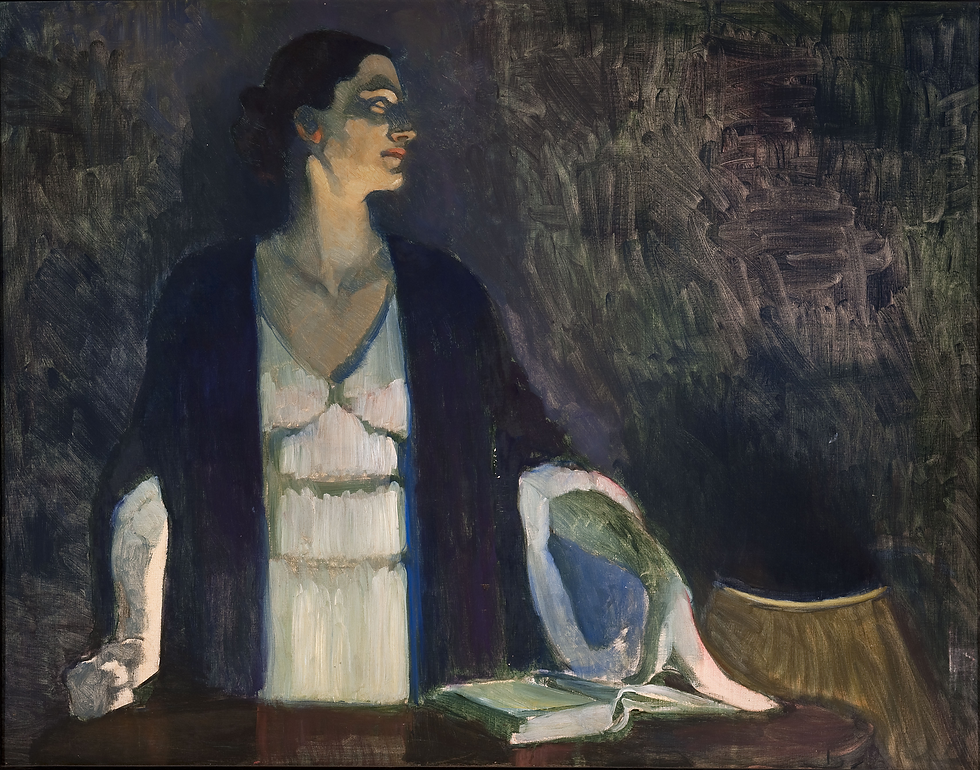Cultural Evolution at Wrightwood 659
- Angela Allyn
- Oct 18, 2022
- 3 min read

Now on view at the exclusive Wrightwood 659 Chicago in Lincoln Park, the exhibition The First Homosexuals:Global Depictions of a New Identity 1869-1930 is daring. The sweeping exhibition postulates that the identity ” Homosexual” evolved in the western world after the term was coined in 1869 by the Hungarian writer and activist Karl Maria Kertbeny. The thesis of this art show is that until that time, sexuality was defined by acts, and an idea formulated that same sex relationships were an identity, and a way of people defining a distinct, and until recently, hidden culture. The concept of this distinct identity caught on around the world, not only for the good of relating others with this cultural identity, in fact being so identified often became a method to “other” and police these relationships which had come to be thought of as unnatural. Still, artists learned to speak in imagery that at once appealed to a hetero normative world, and still gave this new identity pride of place. To see oneself in the visual culture is, even if in code, a form of validation.
The exhibition is ambitious: containing photos, books, paintings, prints, and it includes both male and female and non-binary images as it works to contextualize the idea that artists were creating a visual expression and creative culture that at once was popularly accessible and “out” but was also a kind of cipher for people who defined themselves as homosexual. The exhibition also features many rarely seen non Western works.
The exhibition has several sexually explicit works, so it is for mature audiences only. I found curator and art historian Jonathan D. Katz’s thesis to be intriguing: it begins with works created before 1869 which featured same sex eroticism quite openly and normatively– though to be fair these were Japanese prints– then as we move into the section “Couples” there are veiled references to same sex couples, also gender fluidity is depicted, a theme that is underlined in the section called “Between Genders”
The exhibition features some fascinating documentation of The Elisarion, a temple to the arts and kind of Utopian hang out spot created by same sex cultist Elisar von Kupffer in the 1920’s in Switzerland. Much of the imagery is neo Classical and feels familiar, as the idea of places where like minded people could gather and express their philosophies about culture seems to be a hallmark of the 19th century.
The collection of works assembled here aspires to delineate new ground in the history and formative imagery of Queer identity, and it gives one a new lens with which to view works from art’s archives, giving fresh interpretations of and connections to what is on the walls of any given venerable art museum. This is only the first part of the overall exhibition. In 2025, 250 works will be gathered for Part II in a major exhibition that will travel internationally.
The main takeaway from this show is that it opens a window to a conceptualization of identity formation within the waves of culture and validates a place in the cultural narrative for sexual identities outside of the heteronormative bulwark. It reframes a visual iconography in surprising ways and asks the chicken and the egg question-- does the identity or the imagery come first?
The exhibition asks one to speculate deeply on how how media shapes ideas of identity.
It is a vitally important exhibition in the ongoing cultural conversation and not to be missed.
The First Homosexuals is on view at Wrightwood 659, 659 Wrightwood Avenue Chicago until December 17th. Tickets are $15 and the gallery is only open Fridays and Saturdays and you must reserve a time at https://tickets.wrightwood659.org/events. Walk ups are not permitted and at press time, proof of vaccination is required for entry and masks must be worn for your visit.







Comments